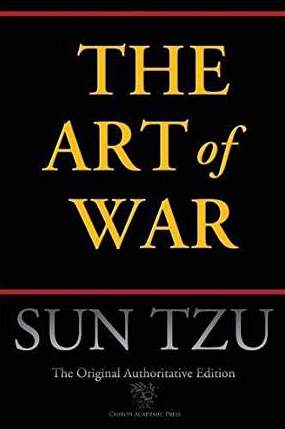Lessons from "The Art of War" for Project Management Success (III)
How to Make Use of the Principle of Paradox

“The Art of War” is one of the most ancient books on strategy and one of the most famous books of all times. On the surface, it is about how to win a war but a lot of what is said is applicable to project mangement.
In part three of our series about project management lessons from “The Art of War” we will talk about how to use the tao of paradox to your advantage.
After having explored the five measures every project manager should take into account when starting a project, let's take a look at one of the core strategies of Sun Tzu's teachings.
The tao of paradox
When Sun Tzu talks about paradox, he uses metaphors and images to illustrate his concept. In The Art of Strategy by R.L. Wing, one of Sun Tzu's explanations is translated as:
Heed me by calculating the advantages
reinforce them by directing outwardly.
This has a very direct relationship to the strategic work a PM does in that it calls upon the practitioner to measure and understand their true position and then “reinforce” (read as spin or manipulate) the perception of that position by how you represent it.
As he moves into the next section, Sun Tzu provides more clarity into how the perceived reality can be manipulated:
Thus, when able, they appear unable.
When employed, they appear useless.
When close, they appear distant
When distant, they appear close.
They lure through advantages,
And take control through confusion.
In this R.L. Wing translation, this is referred to as the “Tao of Paradox”. The instruction is to create a perceived reality that is not necessarily accurate in order to gain advantage.
Why you should master the art of manipulation
This is “playing dead” or manipulating how we project ourselves and our situation in order to gain the upper hand. There are obvious implications in the context of an armed struggle, but think about it in the setting of a meeting at work, when you pretend to know less than you do in order to either gain more information, or learn more about another’s understanding of a situation. Even down to basic interviewing tactics where you lead an interviewee towards an answer you hope to get by pretending you have a problem you have not been able to solve.
This tends to be one of the areas of the text where “nicer” people often get stuck. They perceive this as dishonest or misleading and, rightly so, if they consider themselves to be honest folk, it is something they would not purposely strive for.
But beyond a physical conflict context, this is something which all of us do in our daily lives from childhood, often without even being conscious of it.
As children we learn to get what we want by creating a sense of urgency that will draw the response we are looking for from our caregivers. While not many PMs would willingly admit to lying to create a false impression, how many would be able to say that they had never added a little spin to a status report to create a more positive impression, or led their team to believe that failure to meet a deadline meant certain doom for their employment, in order to drive the team to getting the work done on time.
As Sun Tzu says, “everyone uses the art of war”. The Tao of Paradox is no exception. The question is, is it better or “more honest” to use it absent mindedly, or to understand it as a normal behavior without judging it and learn to be more aware of when and how you make use of this approach so that you can wield it with greater skill and a greater sense of responsibility.
As someone managing a project or a team, you need to be vigilant for those moments when you can achieve the little wins that build trust and drive the efforts toward delivery.
Conclusion
Sun Tzu uses the word “attack” when talking about taking advantage of manipulation. Attack in this sense does not have to be negative. You can just as easily attack a lack of faith in the project or a negative perception of the team. As leaders, we are often able to have a greater impact when we bring order to the chaos around us if people have already decided that we are caught up in the chaos that has taken hold of them. When done well, this spin can make things look like you have saved the day with relative ease. The idea is not to create drama in the space around you, but take advantage of what is already there to engineer an impression of the situation, and your role in it, that will allow you to gain the position you desire.
In the next and final part of our series about “The Art of War” and its lessons for project management, we will explore how to best handle uncertainty.

